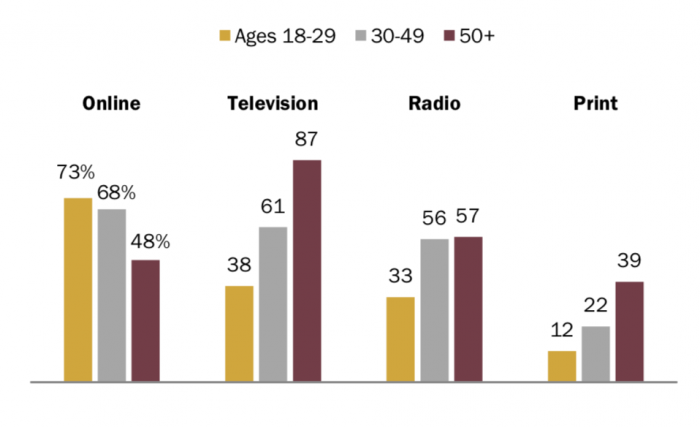
New research from Pew finds that young people from eight Western European countries are less trusting of the news media than older people from those countries. People under 30 are also much more likely to get news online than from TV, and much less likely to get news in print. And, across all countries surveyed, they are less likely than older adults to name public media as a top news source — but more likely than older adults to “name a newspaper or magazine brand as their main source for news.”
Western Europeans under 30 are also particularly critical of the way that the news media covers immigration, the economy, and crime.
The researchers surveyed 16,114 adults across Denmark, France, the U.K., Sweden, Spain, the Netherlands, Italy, and Germany. Here are some of the findings from the report, released Tuesday.
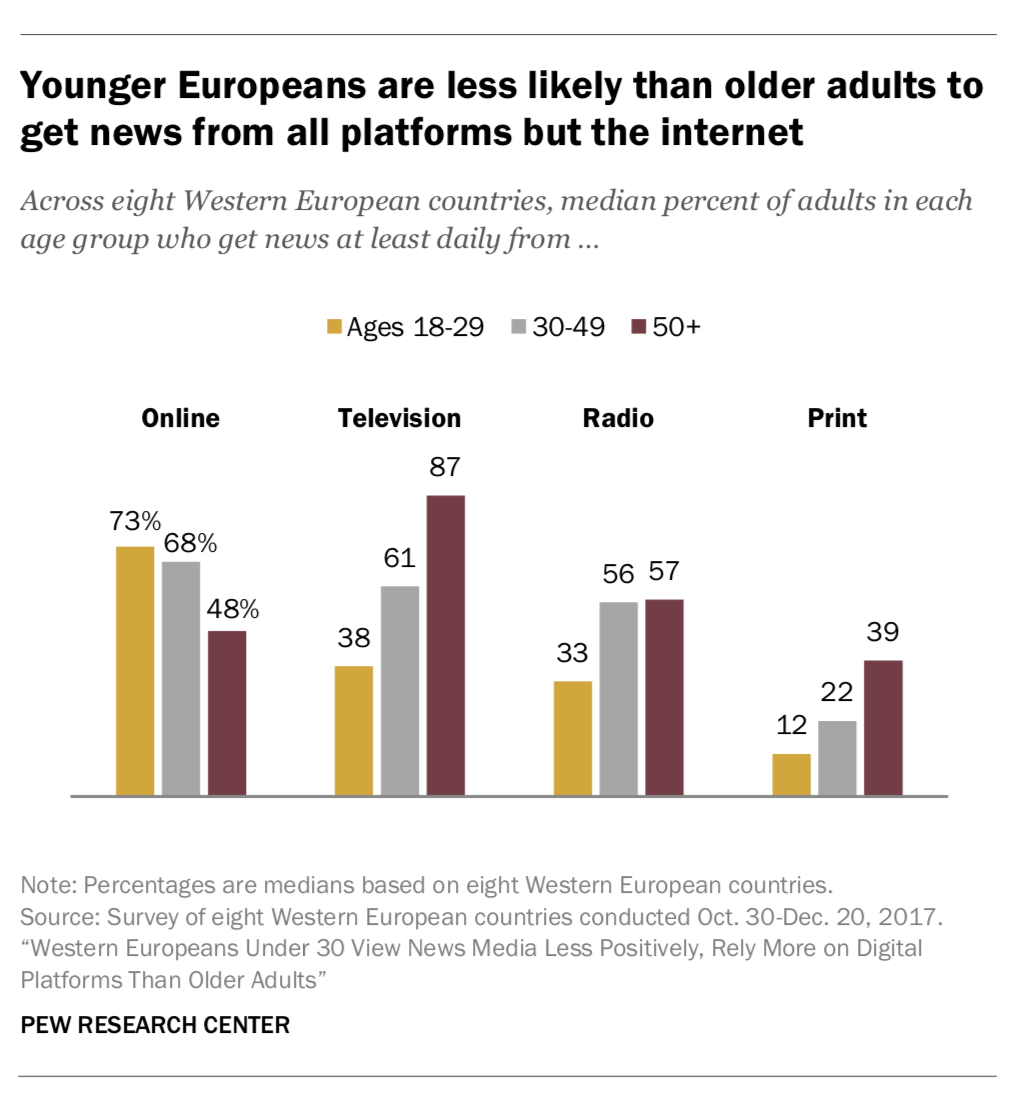
Fewer than half of respondents under 30 get TV news “at least daily” — except in Spain and Italy, “where about two-thirds of younger adults get news from TV daily.”
Though young people are less likely than older people to read print news, they do rely on and trust newspaper brands. Perhaps relatedly, the Reuters Institute for the Study of Journalism noted earlier this year that, across 37 countries, people under 45 are more likely to pay for news than people over 45.
It’s no surprise that young Western Europeans are “far more likely to get news on social media than older adults.” Don’t think of this as news from random social media accounts, though — the 18- to 29-year-olds surveyed were “more likely to be familiar with the news sources they encounter on social media than those ages 50 and older.”
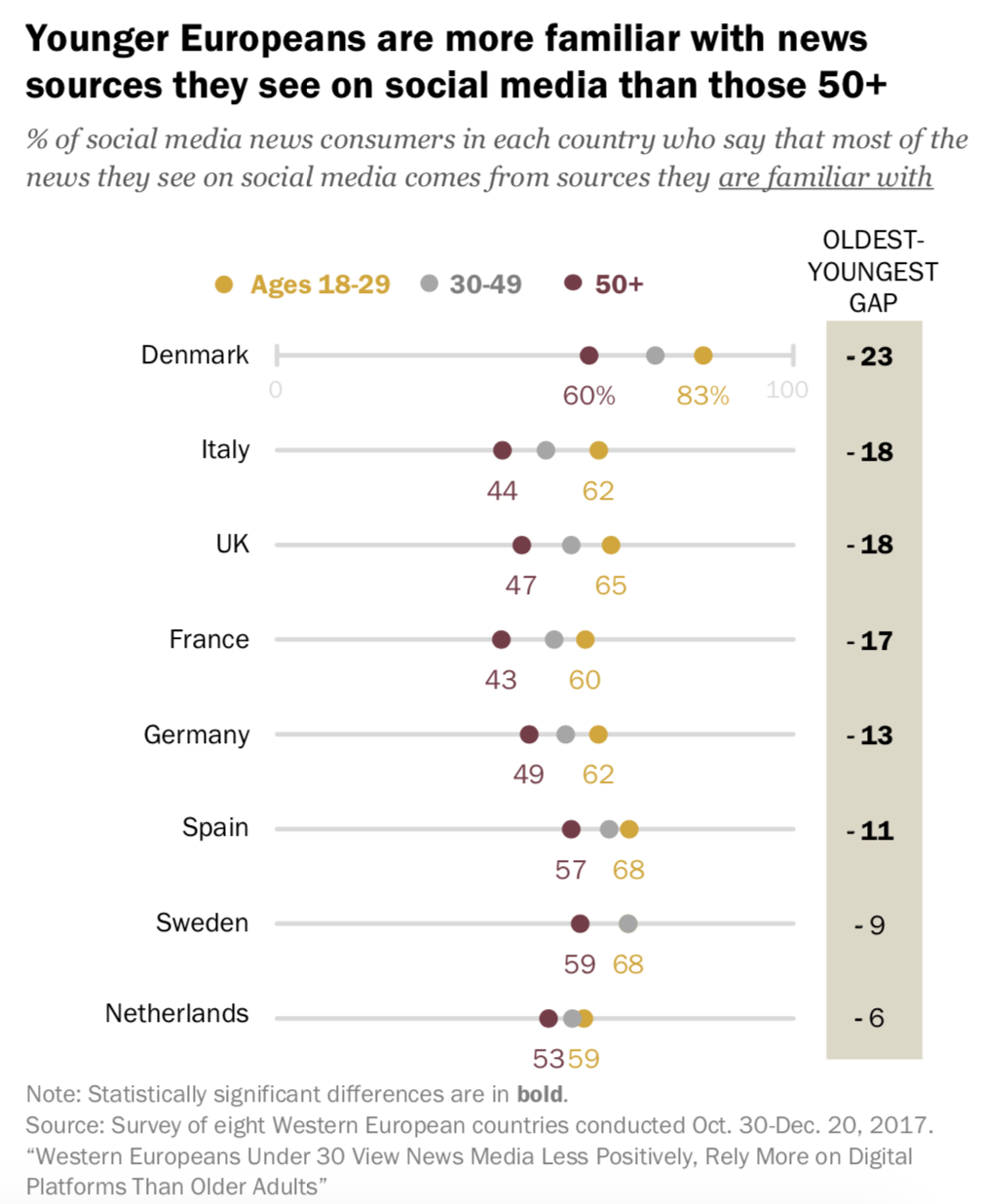
Perhaps surprisingly, “few Western Europeans, regardless of age, think the news they see on social media reflects their own views.” Along the same lines, “across most countries surveyed and across all age groups, few say the news they discuss with friends is reflective of their own views.”
Younger Western Europeans are less likely to rely on public news organizations than older people.
In the southern countries studied — France, Italy, and Spain — public news media don’t rank among the top three sources named by younger adults at all…In the rest of the countries surveyed, even though public news organizations do rank among their top three main sources, younger adults don’t name these accounts as frequently as those 50 and older do.
The one exception is the U.K., where the BBC is “the most named news source across all age groups, cited by at least four-in-ten adults in each age group as their main news source.” (Nonetheless, the BBC has real concerns about retaining young viewers in the age of Netflix and YouTube.)
A turn away from public media does not mean a turn away from traditional media companies in general.
[Younger Europeans] are more likely to name a newspaper or magazine brand as their main source for news. A striking example is France, where Le Monde is the most commonly named main news source among those under 30 — 20 percent name it, compared with 6 percent of those 30 to 49 and just 2 percent of those 50 and older. Newspapers are far less common as a primary news source among the oldest age group in all eight countries. Only in one country — Sweden — did adults ages 50 and older name a newspaper (Aftonbladet) at a rate of 5 percent or more as one of their primary news sources. Adults ages 30 to 49 name newspapers as main sources in some countries but usually at lower rates than those under 30.
In addition, while younger Europeans trust the news media (in general) less than older adults, they trust print outlets at higher rates than older adults.
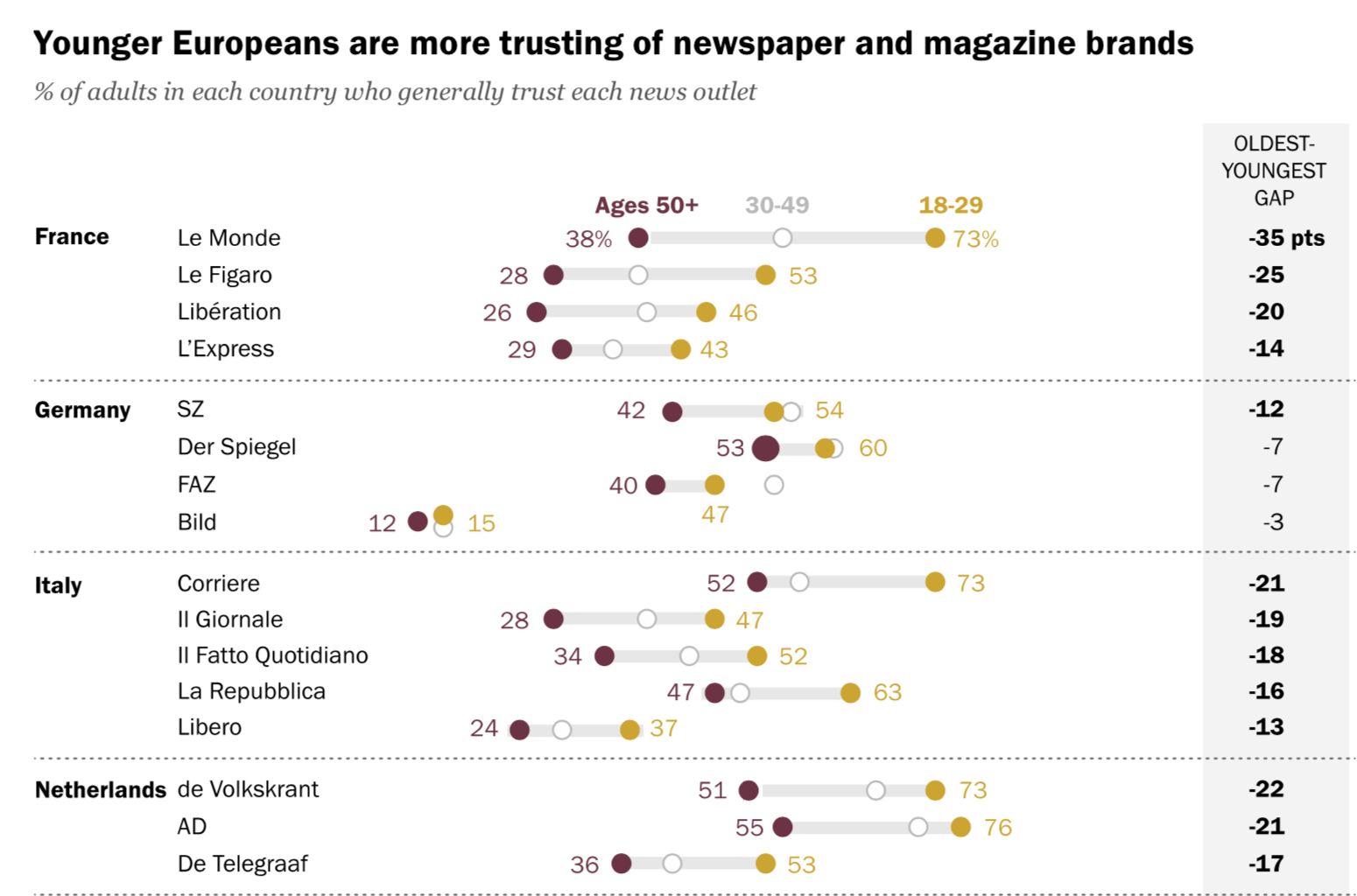
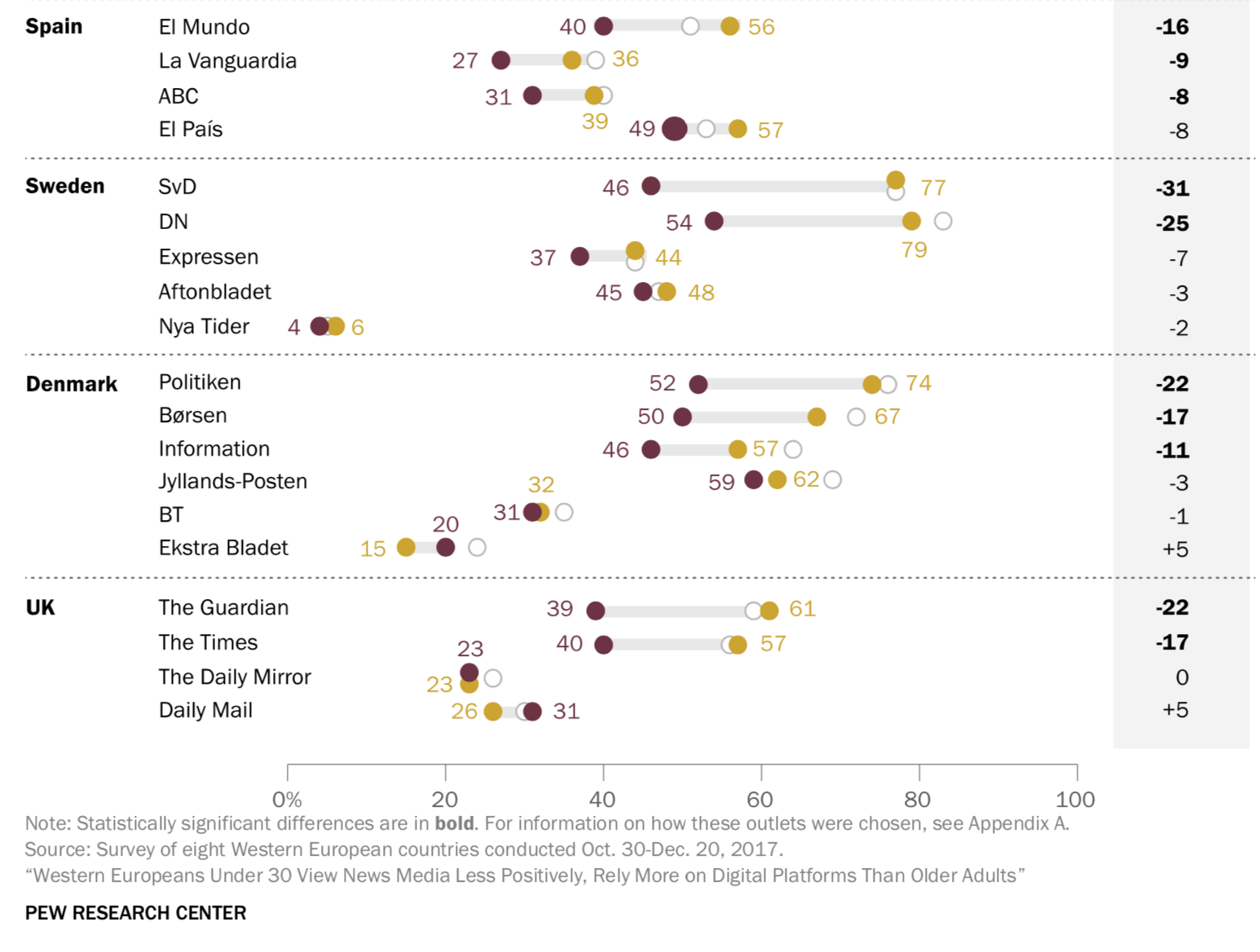
The full report is here.